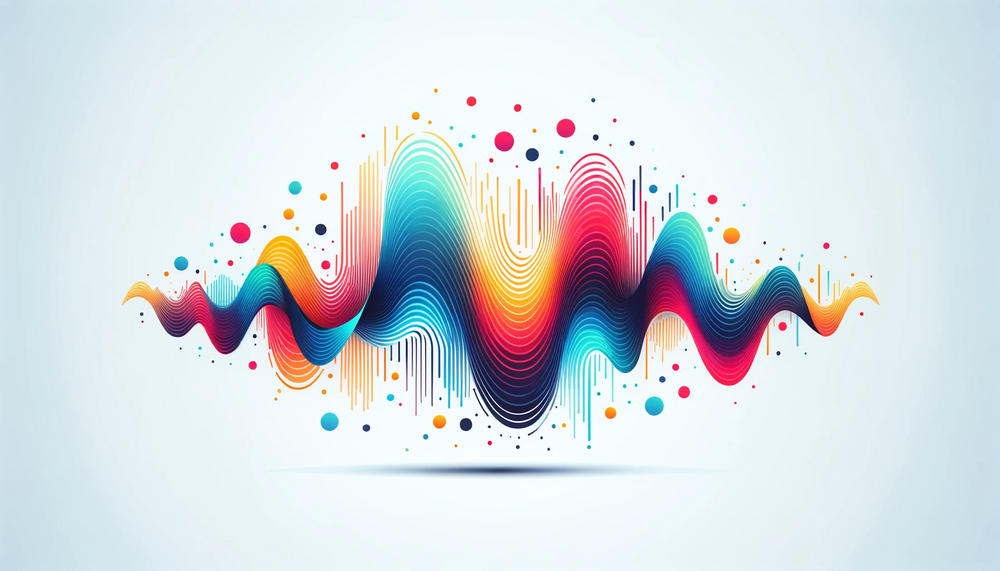Pop quiz. Do you want to make your radio:
a) Instantly identifiable
b) Ear-catching
c) Insanely unique
Sonic branding, radio imaging, and sound design will do the trick.
Just a minute, these sound like big hard words.
No worries though. I've explained them.
And included loads of radio imaging examples you'll love listening to...
Let’s go:
What's sonic branding?
It’s using sound to brand your station, product or service.
Just as you use a visual logo to fortify your brand's identity, unique sounds can brand your radio.
And sound design?
It’s everything to do with creating soundtracks.
—recording, manipulating, blending recorded tracks together, mastering, adding sound effects to videos, and more!
For instance:
When shooting a movie, the sound engineer is responsible for every sound you'll hear.
What about radio imaging?
Radio imaging refers to all the sound effects such as jingles designed to brand and identify your station.
—same concept as sonic branding with the word radio thrown-in.
So comes the million dollar question:
Should you bother with it?
Yes...check out these benefits:
Benefits of radio imaging:
- Helps people identify your station—and know your radio format.
- You can use radio imaging to increase listenership for upcoming shows.
- Radio imaging that's really catchy may help you win over listeners from rival stations.
- It gives your radio station a certain feel—for instance, talk shows will make their imaging sound formal.
- Useful when appealing to a particular demographic or age group.
- Helps maintain the flow such as using sweepers to transition in between songs.
Types of imaging
Jingles
Jingles are short music items that have sung slogans, catchphrases, station's name, and frequency.
Sweepers
While jingles are sung, sweepers are spoken announcements you play just before a next song starts as overlays.
For instance, during the intro— those seconds before the artist starts singing—you can play a short sweeper.
Because of this, sweepers tend to be less than 20 seconds long.
You can say the station’s name and frequency.
e.g., “You’re listening to the best music on Hot 96 Radio.”
Acappellas
They are jingles that are sung without instrumentals.
Music beds
A music bed is the melody part of a song without any spoken words or vocals.
Both TV stations and radio stations use music beds.
For example:During a news broadcast, the presenter may read the news as the music bed plays in the background.
Sometimes radio stations play music beds too loudly.
This interferes with the presenter’s intelligibly and annoys listeners.
Liners
During certain points of your broadcast, you may announce the station’s name or frequency.
These are called liners.So, instead of playing a jingle or sweeper over and over...
...add variety with liners.
Bumpers/Stingers
Bumpers are short audio pieces; about 60 seconds long with short clips of upcoming songs.
For instance:
In a 40-second bumper, you start with a 3-second air siren, followed by a sweeper with the station ID + slogan.
Then you can introduce a song mentioning its title and artist. And play a short clip of it.
Stingers, on the other hand, will have short audio clips of speeches made by persons of interest such as politicians or celebrities.
Promos or Trails
You can use promos to notify listeners of upcoming programs and urge them to tune in.
For instance:
If you're interviewing a very special guest this Saturday, create short ear-catching trails and play them throughout the week.
Here are short guidelines to follow:
1) Your promos must stir some emotion in the listener (e.g., fear, anger, happiness).
2) Contain enough info and without giving a lot away.
3) Mention the time and date.
Drop-ins
They are short clippings from TV programs, songs or movies.
For example:
Here is Arnold Schwarzenegger saying, "I will be back."
----------Drones
They're prolonged sound effects used to raise the listener's tension as they listen to someone giving an answer during a call-in contest or radio game show.
----------Vox Pops
Vox pop is a term derived from the Latin phrase, “vox populi,” which means “Voice of the people.”
These short audio segments feature replies to one-question interviews from randomly selected respondents.
They last for 1 to 2 minutes and support the news or interviews.
Why do vox pops? Listeners also want to hear the opinions of the ordinary person on the street.
----------Intros & Extros
You can have unique intros for your shows or podcasts.
After people tune-in, you can keep them curious by announcing upcoming items in the programme.
Near the end of the broadcast, you'll play an extro to signal the show's adjournment and transition to another program.Listener voices or Vox IDs
With listener voices, you reach out to listeners and ask them to say how much they love your station.
Or why they listen to you.
For instance:
A listener may say, "I love Kiss 100 because they play all the latest RNB."
You can string a couple of these and play them like sweepers.
Never miss another post..
Did you like this post?
We're prepping more nutritious posts in our busy content kitchen.
Like our Facebook page or subscribe to our newsletter to become an informed radio owner!
We also tweet.
Start your internet radio with us
We offer an excellent hosting option with a fully customizable price. Get started easily.
